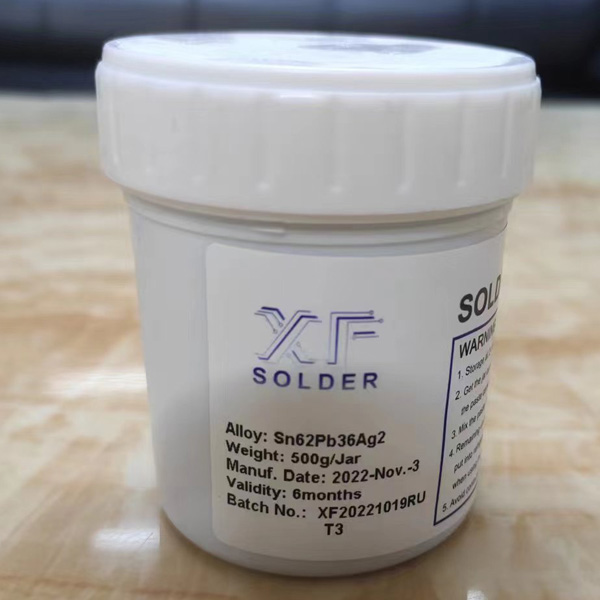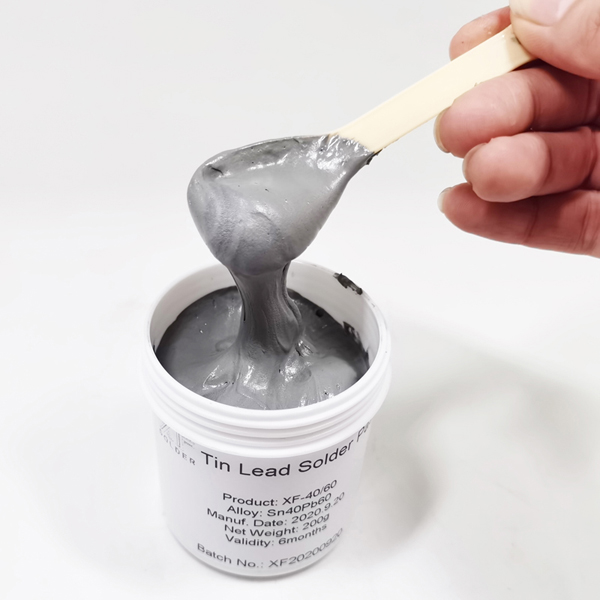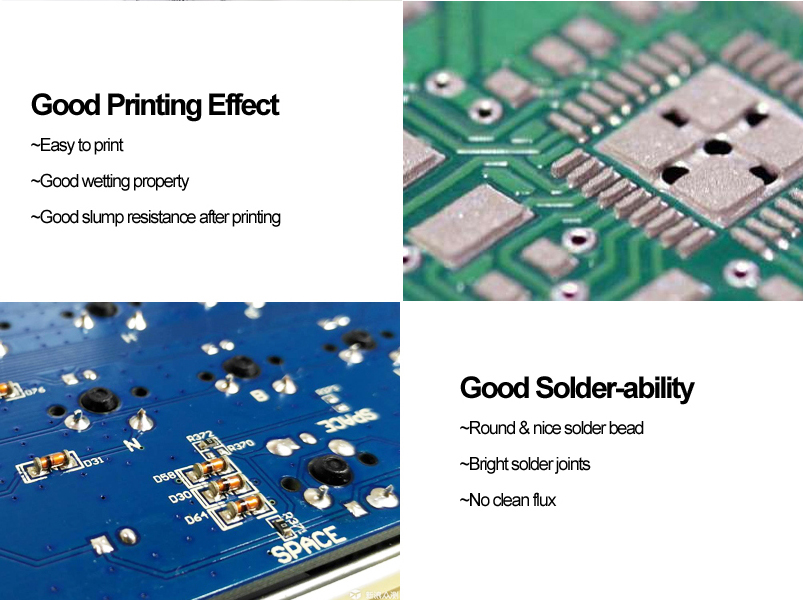Leaded Tin Silver Solder Paste Sn62Pb36Ag2
Leaded Tin Silver Solder Paste Sn62Pb36Ag2
Basic Product Information of Leaded Tin Silver Solder Paste Sn62Pb36Ag2
Solder paste is a type of soldering
material that is used in the assembly of electronic components onto printed
circuit boards (PCBs). It is a key component in the process of surface mount
technology (SMT), which involves the placement of components onto the surface
of a PCB rather than through holes. Solder paste is a viscous mixture of fine
solder particles, flux, and a binder that holds the mixture together in a
paste-like form. It is applied to the PCB using a stencil and then heated to
melt the solder and create a strong, permanent connection between the
components and the PCB.
One popular type of solder paste is
Sn62Pb36Ag2, which is a eutectic alloy composed of 62% tin, 36% lead, and 2%
silver. Eutectic alloys have a unique melting point that is lower than the
melting point of any of their individual components, making them easy to melt
and work with. The Sn62Pb36Ag2 alloy has a melting point of 179°C, which makes
it ideal for use in SMT processes where the PCB and components are heated to
relatively low temperatures.


Benefits of Leaded Tin Silver Solder Paste Sn62Pb36Ag2:
There are several key features that make
Sn62Pb36Ag2 solder paste an attractive choice for many applications. One of the
main benefits is its high reliability and consistency. The addition of silver
to the alloy improves the overall performance and reliability of the solder
joint, and the eutectic nature of the alloy ensures that it melts and
solidifies at a consistent temperature every time. This can help to reduce the
risk of soldering defects, such as cold or insufficiently melted joints, which
can lead to reliability issues down the line.
Another key feature of Sn62Pb36Ag2 solder
paste is its good electrical conductivity. The combination of tin and lead in
the alloy creates a solder that has good electrical conductivity and low
resistance, which is important for ensuring efficient signal transmission and
power delivery in electronic devices. The addition of silver to the alloy also
helps to improve the conductivity and thermal performance of the solder.
Applications of Leaded Tin Silver Solder Paste Sn62Pb36Ag2:
In terms of its application and use,
Sn62Pb36Ag2 solder paste is typically used in SMT processes for the assembly of
electronic components onto PCBs. It is applied to the PCB using a stencil,
which is a thin metal or polymer sheet with openings that correspond to the
locations of the components on the PCB. The stencil is placed over the PCB and
the solder paste is applied through the openings using a dispensing machine or
a manual squeegee. The PCB and components are then placed onto the paste, and
the entire assembly is heated to melt the paste and create the soldered
connections.

Technical Information of Leaded Tin Silver Solder
Paste Sn62Pb36Ag2:
The basic technical data for Sn62Pb36Ag2
solder paste includes its melting point, which as mentioned is 179°C, and its
viscosity, which is typically in the range of 10,000 to 50,000 centipoise (cP).
The viscosity of the paste can be adjusted by adding or removing flux or by
using different binder materials. Other technical data for Sn62Pb36Ag2 solder
paste includes its flow rate, which is a measure of how well it spreads and
conforms to the surfaces being soldered, and its wetting properties, which
refer to its ability to form a strong, reliable connection between the
components and the PCB.
In summary, Sn62Pb36Ag2 solder paste is a
reliable, high-performance soldering material that is widely used in the
assembly of electronic components onto PCBs. Its eutectic composition, good
electrical conductivity, and consistent melting point make it an excellent
choice for many SMT applications, and it is easy to use and apply to PCB.
Contact our sales team for more technical information or for a quote. Email: xfsolder@gmail.com or xfsolder@163.com ; Whatsapp/Wechat: 008613450770997
